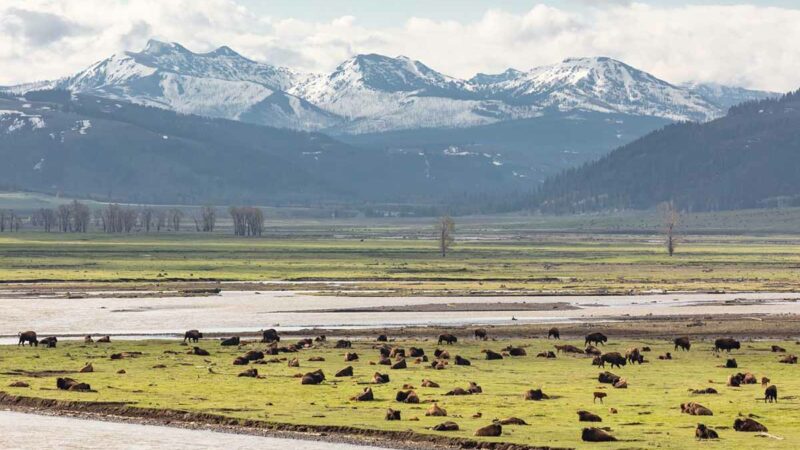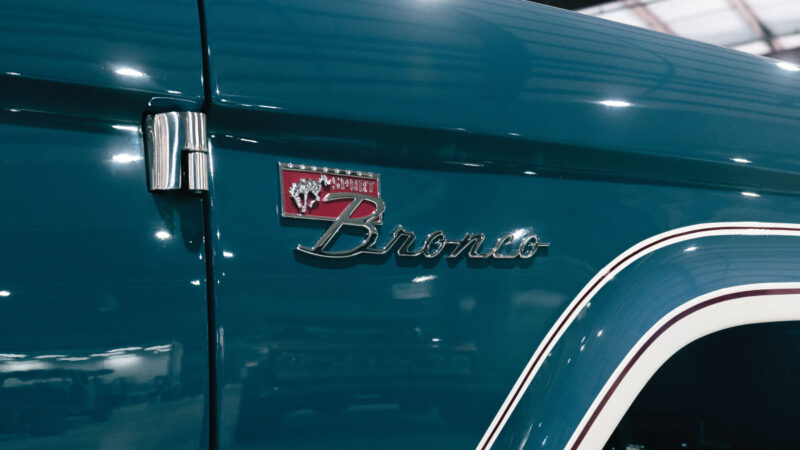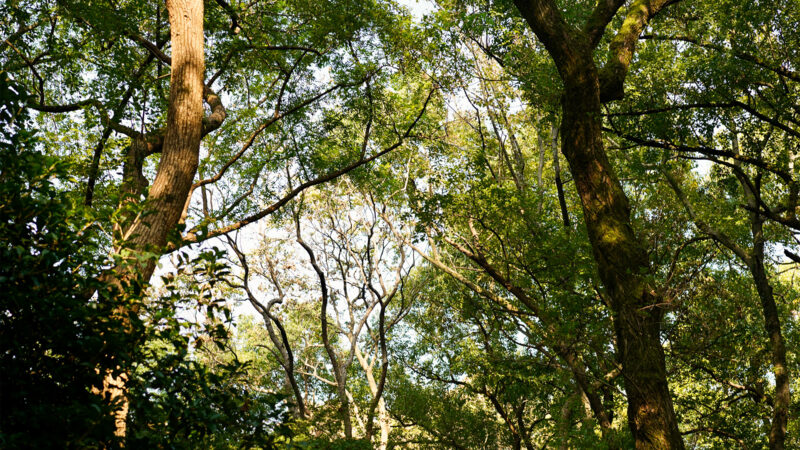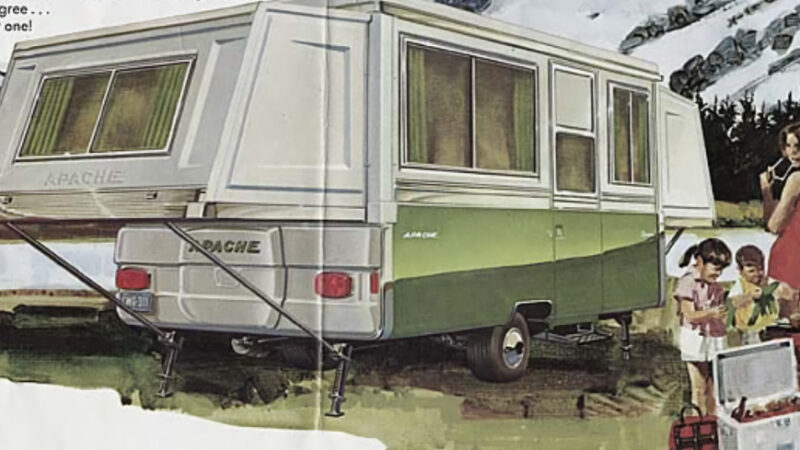The Camper Van Plan
Call them “Class B,” or call the whole thing “Van Life.” By any name, the coolest camper vans can take you places. Discover the brands, models, gear, and history that turned the humble camper van into a modern adventure machine.
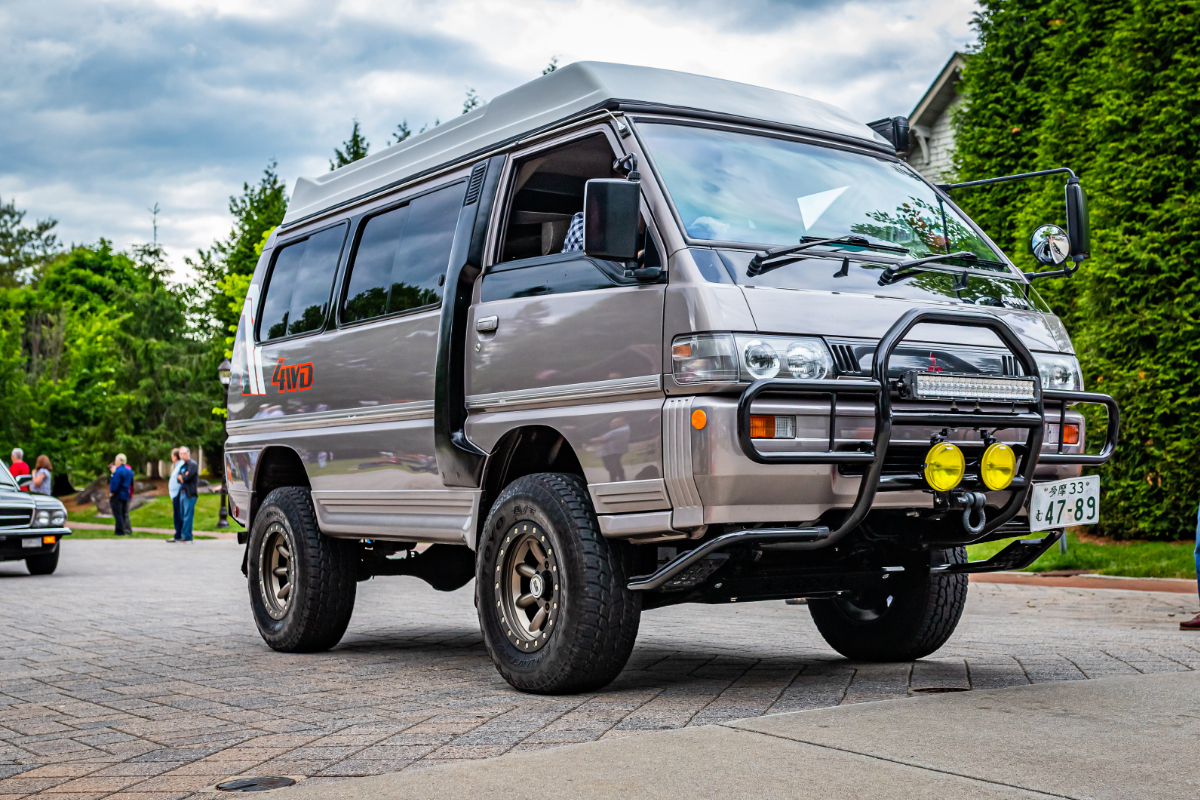
Photo Credit: Different_Brian/Getty
The Van’s Long Trip
When and where did it begin, this dream of a van cruising the American road, well-equipped, beautifully designed and bound for parts unknown? What ignited the 21st century social media explosion of exquisite sunset photos framed by rear cargo doors, all those pics of pandemic puppies doing downward dog in the snow? How did a tricked-out Sprinter become a campground status symbol?
You could argue today’s van-living vogue goes all the way back to the wagon trains. Certainly, today’s four-wheeled dreams wouldn’t be possible without the Interstates, seeded by legislation in 1956, and the Volkswagen Westfalia, introduced to the U.S. that very same year. America’s national parks and highway system set the backdrop for van culture. “If we look at this constant undercurrent of westward recreation,” says automotive historian Casey Maxton, “that is what we consider the real starting point for van life.”
The vehicles have improved in a steady parade. In the ‘60s, Ford unveiled its T-Series, a precursor to the ultra-capable Transit. Mercedes debuted the earliest Sprinter exactly 30 years ago. Other flagship vehicles—the Mitsubishi Delica, Dodge A-100, Chevy G20, the Ford Econoline—broadened the scope of what a van could do.
But the van’s cultural niche evolved as well, in ways perhaps less predictable. Early on, a freewheeling breed of travelers and outdoors folk gravitated to vehicles that could double as a base camp; travel icons on both sides of the Atlantic appropriated these work vehicles to build lives on the road. In 1968, Patagonia founder Yvon Chouinard, along with the late Doug Tompkins of The North Face, drove a beefy Econoline from California to Chile on a six-month climbing expedition. In 1974, Tony and Maureen Wheeler, founders of Lonely Planet, navigated 9,000 miles from England to Afghanistan in a used Morris Minivan.
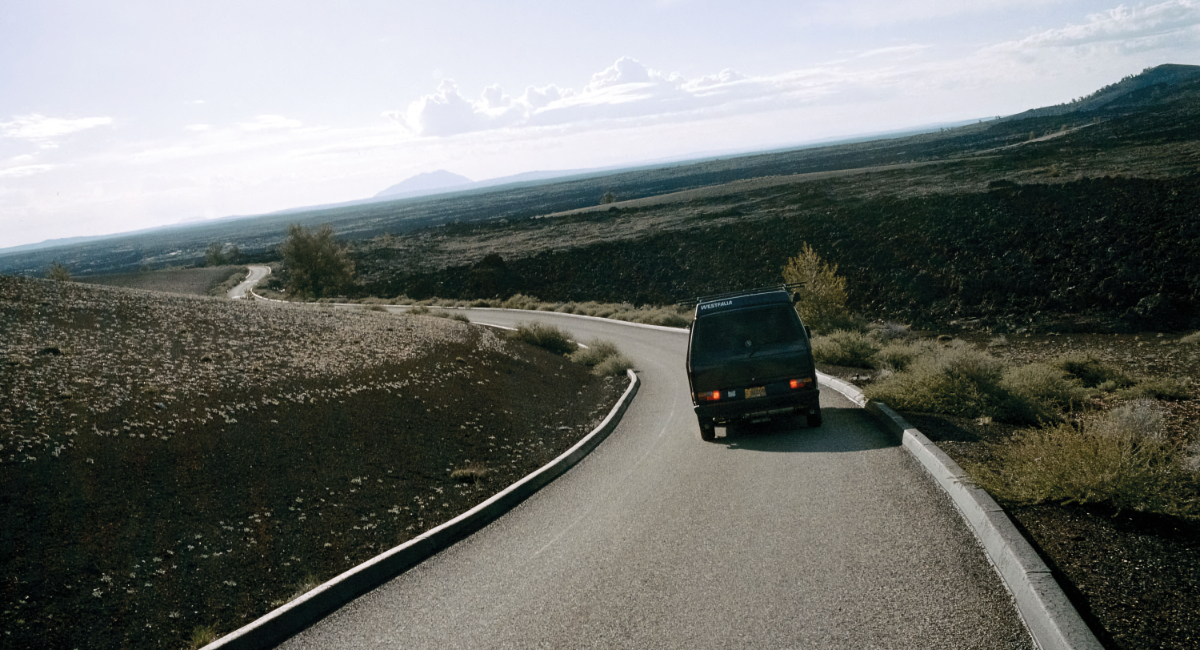
Photo Credit: Mason Trinca
“By the ‘70s, we saw the van customization craze take hold, with murals, bubble windows and shag carpeting,” Maxon says. “That brought more people in—and American automakers also began to respond by partnering with external customizers to offer lift kits,
making vans into something you could live in.”
This possibility stirred some mixed perceptions. In 1993, Saturday Night Live star Chris Farley’s character Matt Foley used van life as more of a punchline than an aspiration: the immortal “I LIVE IN A VAN DOWN BY THE RIVER!” But by the turn of the 21st century, this mode of living was poised for a cultural makeover. Social media would beckon, and before long a new generation would inject fresh life into an American tradition.
Working as a designer in New York City in the aughts, Foster Huntington heard the highway’s call. So, in 2011 at age 23, he bought a Vanagon Syncro and headed for the West Coast. “I was not cut out for the urban, corporate lifestyle,” Huntington says. “That was not going to be the next fifty years of my life.”
Huntington made his move at a fortuitous time. Instagram had just launched. The iPhone was four years old, and anyone armed with a smartphone could find an audience—and dollars—online. YouTube was awash in content from travelers not just highlighting their adventures, but also tutorials for how to customize vans for maximum comfort. Influencer culture was beginning to percolate, and Huntington, who spent his days surfing and shooting photos, leaned in. He used Kickstarter to fund a photo book titled Home Is Where You Park It before fatefully coining the hashtag “vanlife” (#vanlife). The term and tag became a bona fide phenomenon.
“I meant it as a joke,” says Huntington, who has since settled outside of Portland, Oregon, and now favors a Ford F-350. “Tupac had thug life, and I was like: ‘We have van life.’”
Joke or not, Huntington’s term captured something of the times—maybe even an elemental thread of Americana. Living in Seattle working at Microsoft, Harley Sitner was chasing the counterculture vibe of his rambling youth when he bought a vintage Volkswagen camper van. With that purchase he also inherited the issues accrued by its previous owner. Struggling to find a reliable mechanic, in 2013 Sitner bought an old VW garage called Peace Vans. Today his crew is swimming in repair and restoration work, as well as electric conversions, and customization not just of VW Vanagons, but also Mercedes Sprinters, assorted Class B and smaller RVs.
“There’s just something in American life about road trips,” Sitner reflects. “And van life is just another version that connects us to the founding myths of Manifest Destiny and westward expansion. A big part of it is also the expression of rugged individualism.”
Even so, since the start of the 21st century, van life—and #vanlife—has exploded in a manner that makes clear life on the road for today’s adherents is more than a nostalgia kick. Starting with the arrival of highly customizable Mercedes Sprinters, followed by the Ford Transit Custom in 2012, the notion of a combined mobile living room and workspace hit the mainstream. Legacy van makers, as well as a growing number of custom shops, found eager customers among digital nomads and millennial overlanders.
“Before it was cool and trendy, all it was essentially was people putting RV and boat parts into vans,” says Kurt Bradler, owner of Contravans in Denver, Colorado, an all-in-one shop for adventure van build-outs and repairs. “It’s gone from a fad to a full-blown industry.”
Of course, the pandemic played its role. Lock down amplified the reach of social media; remote work brought masses to the road, and a new wave of creatives in the outdoors gave rise to an entire ecosystem of GPS-enhanced vagabonds. Pairing a digitally connected society with a relaxed sense of professional etiquette, it became easy to follow inspiration wherever it led.
“The soul of van life really is about the meaning and not the miles,” says Jen Young, co-founder of Outdoorsy, a global rental company based in Austin, Texas, which has connected van and RV owners with travelers worldwide since 2015. “There’s no question the pandemic fundamentally reshaped how people think about travel, and van life became one of the most liberating responses to that shift.”
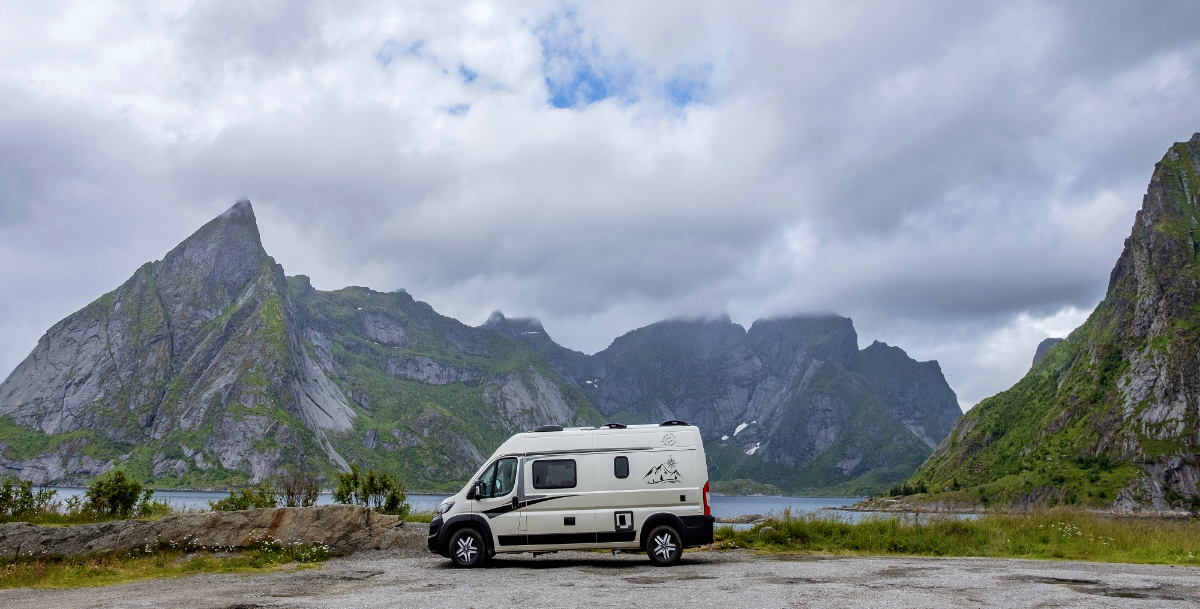
Photo Credit: oksanaphoto/Getty
Among those that made this shift was Johanna Flashman, a roaming SEO consultant, freelance writer and editor who opted for mobile living three years ago. Author of Beer Hiking Southern California, published in 2024, Flashman purchased a used Ram Promaster with 13,000 miles on it. Having added 30,000 miles to the odometer, she has dealt with a variety of challenges, including leaky ceiling fans and faulty electrical fuses. And while her Instagram features stunning landscapes, swimming holes and trail runs, Flashman doesn’t consider herself an influence—she often shows the harder side of van living. “The person who thinks that van life is just going to be smooth sailing,” she says, “is in for a very rude awakening.”
Countless travelers have endured the challenges and expanded the movement. Consider the new VW all-electric ID. Buzz, which can be given a bespoke camper treatment by Peace Vans, bringing the original hippie microbus into the 21st century. Or the seemingly endless list of conversion shops building off the Sprinter chassis today. Vans are rolling into the future. One day, Jen Young suggests, self-driving vans may deliver hikers to the trailhead. Or maybe van lifers will find themselves looking for vehicles that do less, says Alan Macey, who worked for Ford, Volkswagen and BMW before joining the ArtCenter College of Design in Pasadena, where he teaches automotive design.
“I spend time trying to talk my students out of doing everything inside the vehicle,” he says. “You’re going to want to stop and get outside every couple of hours, so is giving up that space for an indoor bathroom really a good idea” The man who first coined #vanlife, Foster Huntington, remains philosophical: “I very much still see people living in vans, or traveling in vans. The beauty of road trips is that they’re so simple to do, and it’s just a great way to get outside.”
The vehicles may change. So may the destinations and travelers. But the road trip will almost certainly endure as it has for decades. From Jack Kerouac’s On the Road to Willie Nelson’s “On the Road Again” to viral hashtags, Americans have proven their zeal for the open road will not be tempered—not anytime soon, at least. And as long as the open road calls, vans will almost certainly venture down it.
Milestones
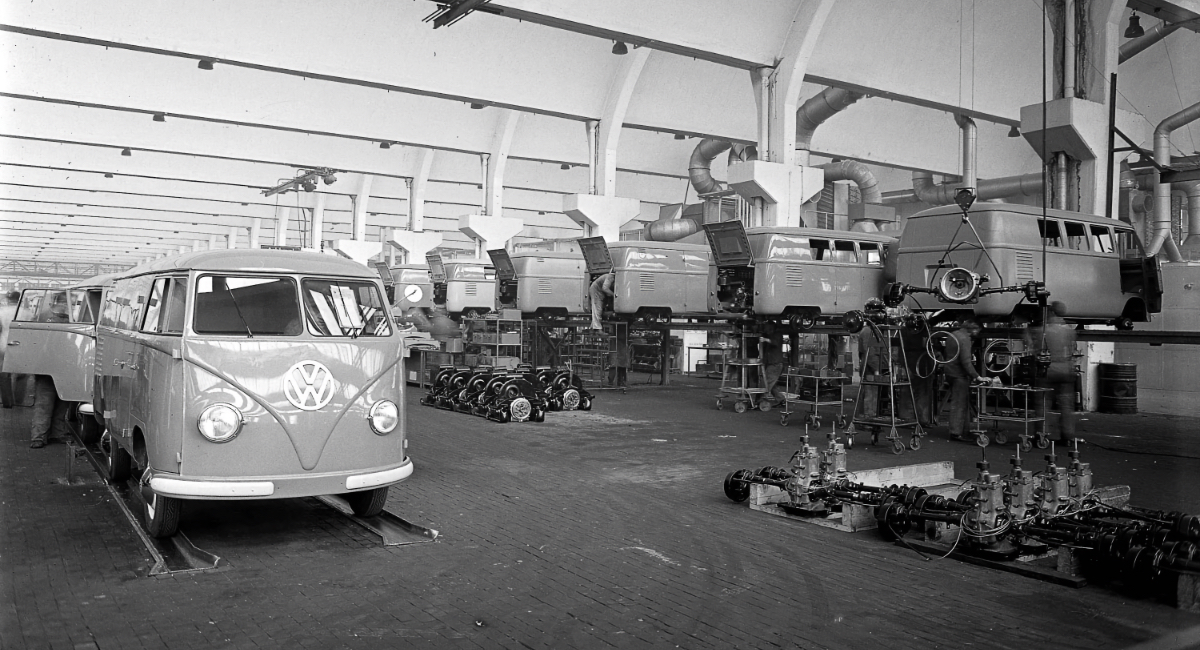
Photo Credit: Volkswagen Aktiengesellschaft
1950
Volkswagen introduces the “Type 2” van, which through its various iterations will epitomize van life for nearly 40 years.
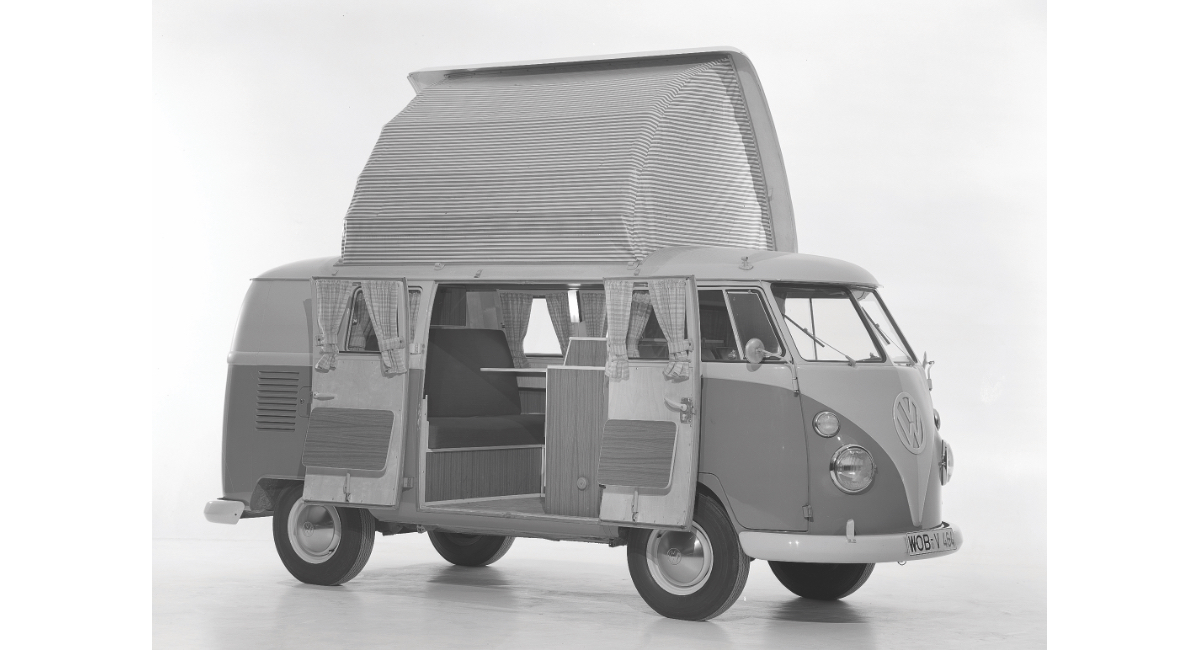
Photo Credit: Volkswagen Aktiengesellschaft
1956
The first VW Westfalia campers are exported to the United States.
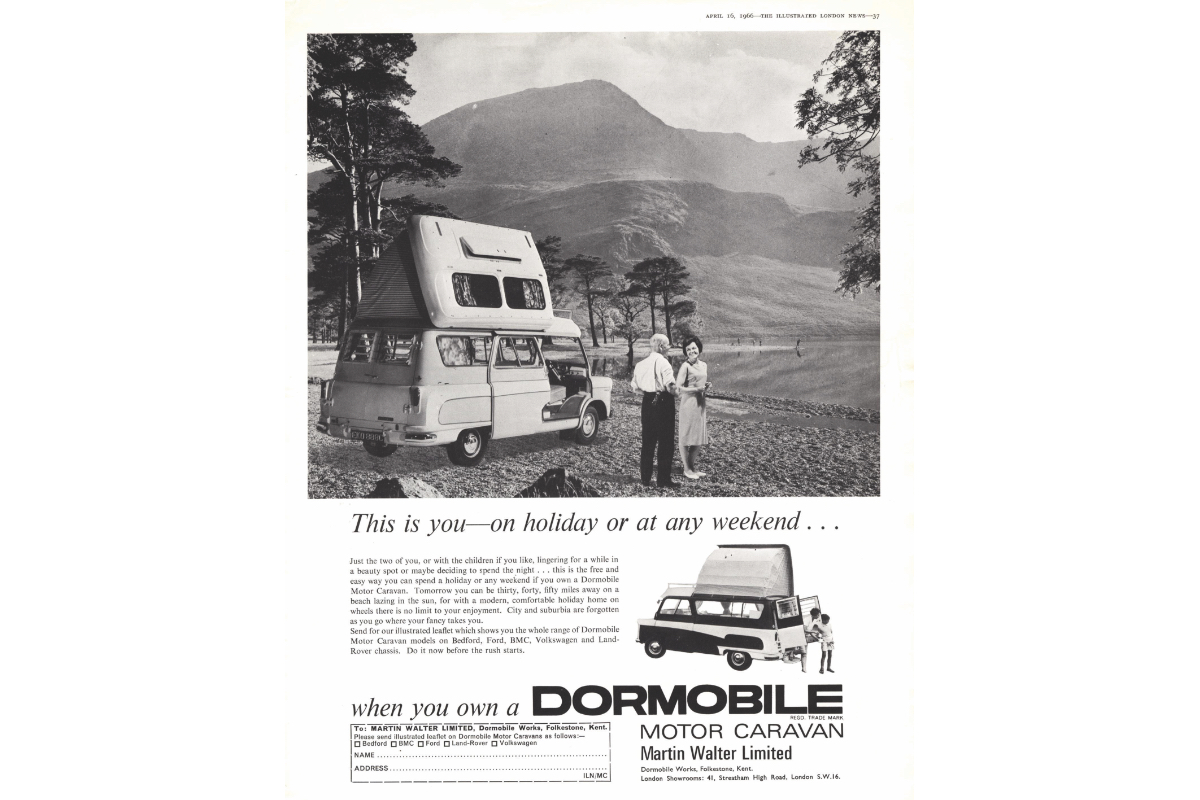
Photo Credit: Advertising Archive/Courtesy Everett Collection
1957
UK-based Bedford starts producing the CA Dormobile, a prototype RV easily converted into a camper van.
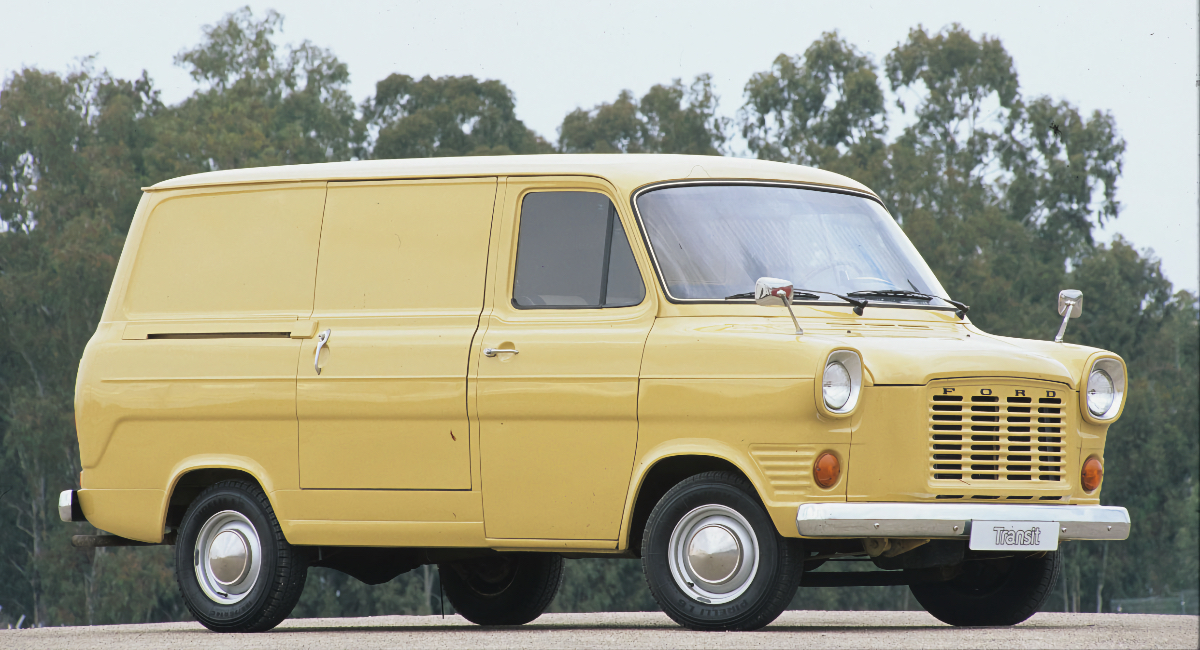
Photo Credit: Ford Motor
1965
Ford introduces the Transit, or T-Series, as a cargo van in the European market. Nearly 50 years later, the fourth generation T-Series becomes the base for many camper van conversions.
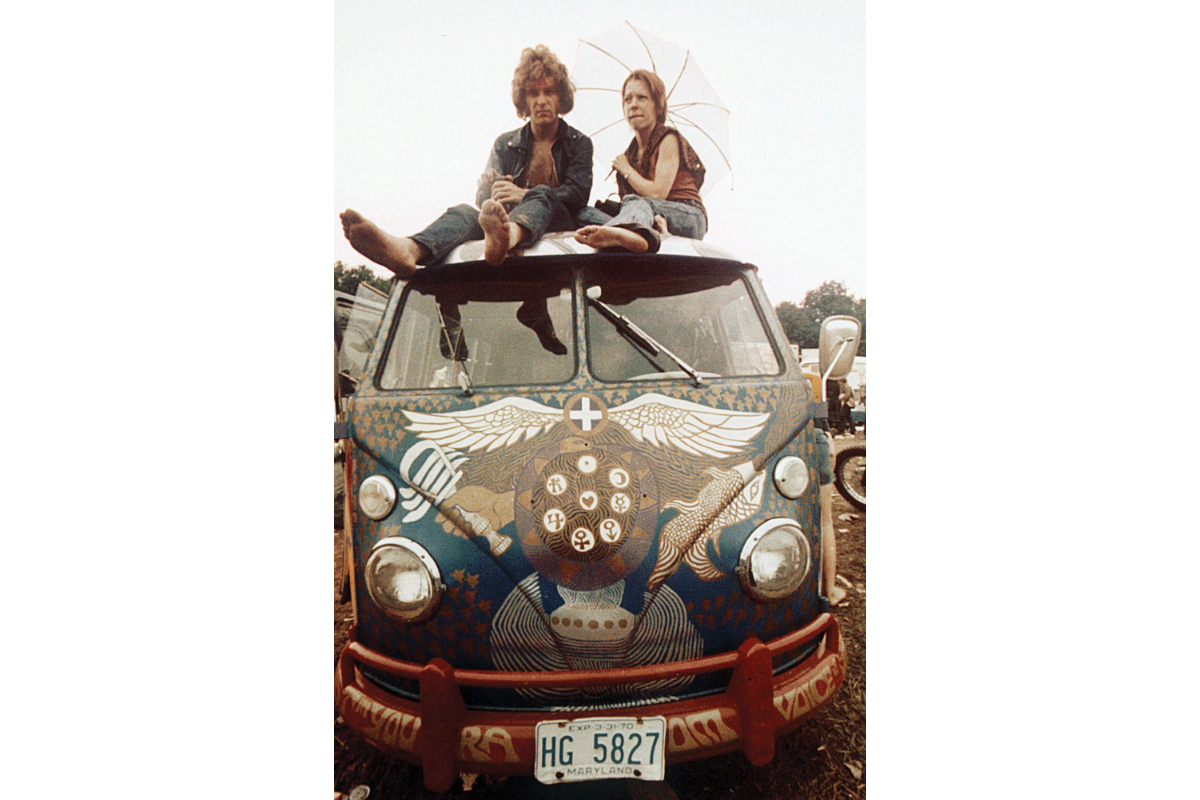
Photo Credit: AP Photo
1969
The Woodstock Music and Arts Fair brings nearly half a million people to Bethel, New York, for three days of peace, music, and revelry. The Volkswagen van becomes synonymous with hippie culture.
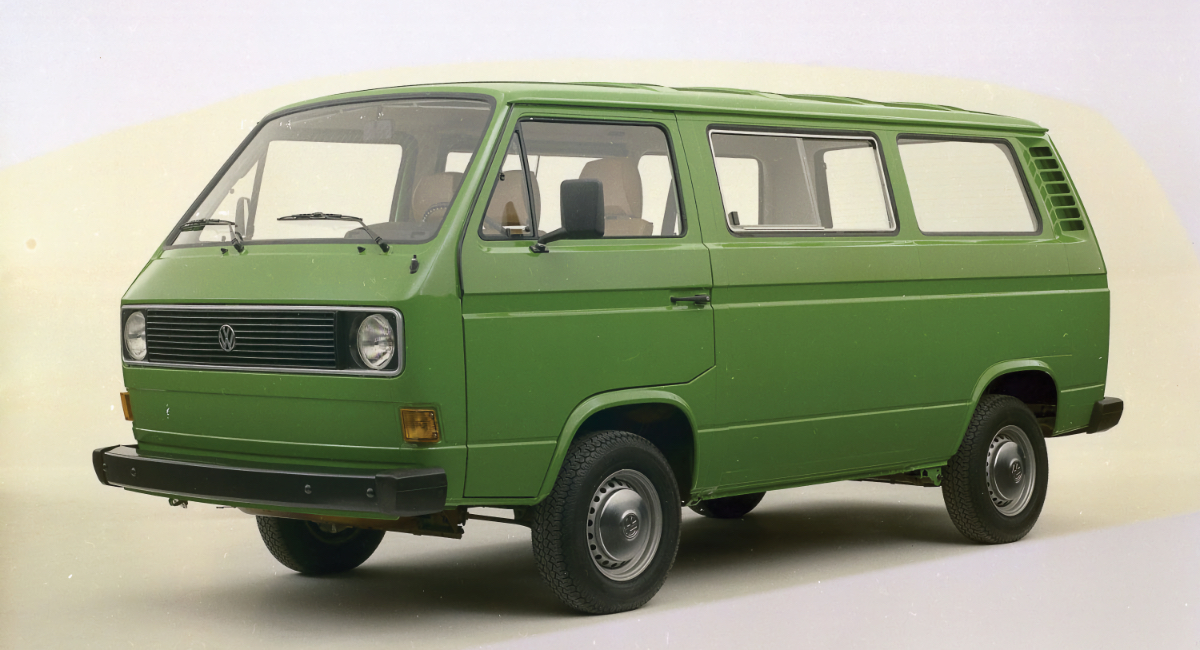
Photo Credit: Volkswagen Aktiengesellschaft
1980
Volkswagen brings the first Vanagon to the United States and introduces the Syncro model with AWD in 1986.

Photo Credit: NBC Universal
1993
Chris Farley introduces Saturday Night Live audiences to motivational speaker Matt Foley, who lives in a “van down by the river.”
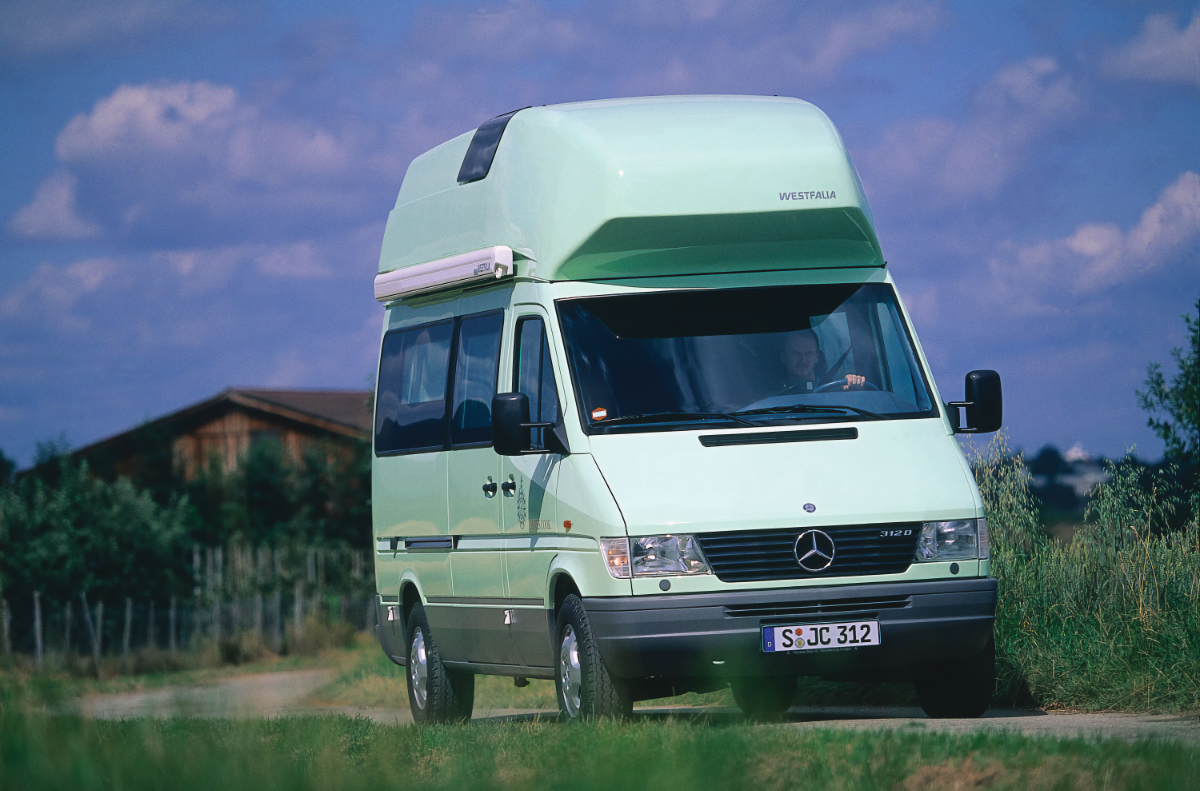
Photo Credit: Mercedes Benz Classic
1995
After decades of producing utilitarian vans for commercial purposes, Mercedes unveils the Sprinter, a rear-wheel-drive vehicle lauded for its comfort. In 2006, the company allowed for further model customization, setting the bar for luxury Class B RVs and the stage for later off-road options.
2010
Instagram goes live, making it (theoretically) possible for roaming influencers to make money off images of #vanlife.
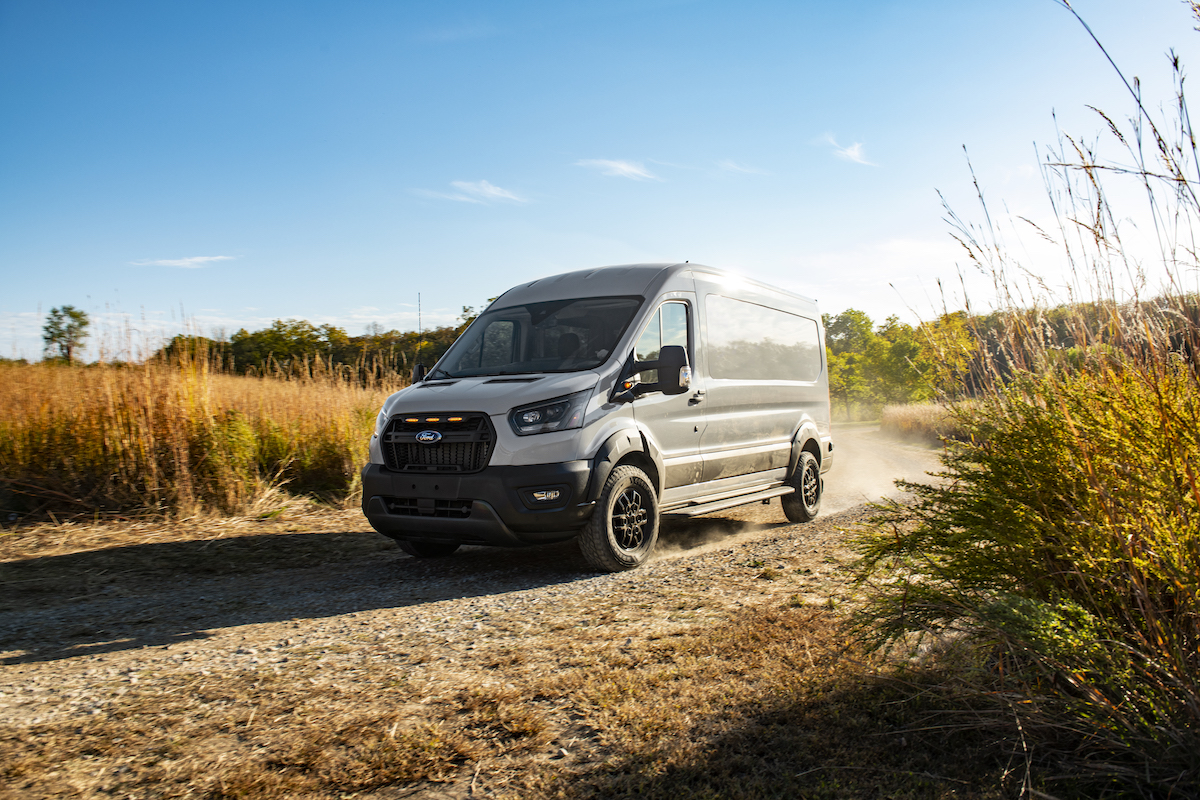
Photo Credit: Ford
2020
Ford introduces its all-wheel-drive T-series with a 10-speed automatic overdrive transmission, setting a new bar for power and affordability in the camper van segment.

Photo Credit: Elisabeth Jurenka
2020
The COVID-19 pandemic hits, leading to a boom in remote work. By some accounts, between 2020 and 2022 new adherents of van life increase by more than 60 percent, with approximately 3 million Americans living full-time on the road.
2021
Nomadland, a film exploring the complexities of RV living in tough times, sweeps the Oscars.
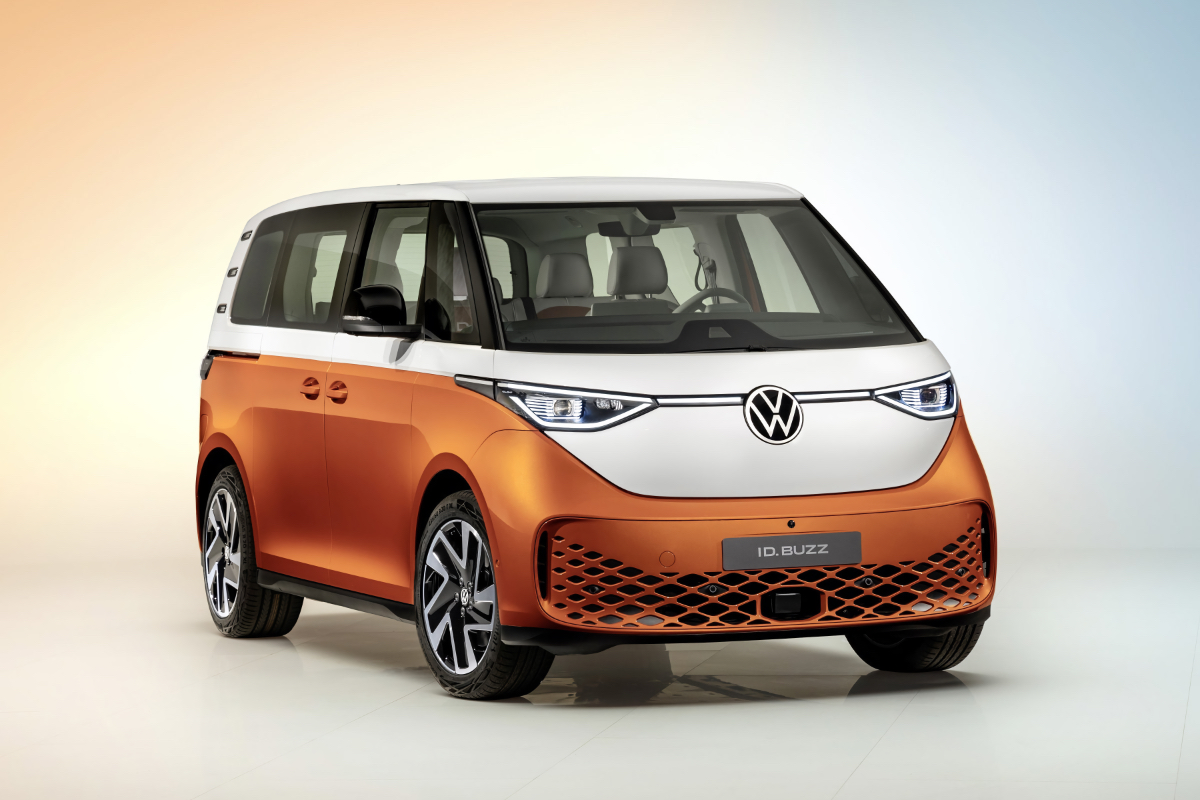
Image Courtesy of Volkswagen
2024
A hint at the next phase of van culture: all-electric Sprinters and VWs roll out.
The Platforms
Since its international debut 30 years ago, no camper van chassis has become more ubiquitous than the Mercedes-Benz Sprinter. It’s the one most often built upon by custom shops and legacy RV manufacturers—and for good reason. The turbo-diesel engine is powerful and fuel efficient, the all-wheel-drive system is industry leading, and the clearance can accommodate off-road adventures. The downside? It’s expensive.
In recent years, the Ford Transit and Dodge Ram ProMaster have emerged as popular—and budget-friendly—alternatives. In
2020, when Ford unveiled an all-wheel-drive model of the Transit, it became a realistic option for van lifers who wanted to explore deep in the backcountry. And with one of the tallest roofs available, the Transit offers a palatial base for a van conversion.
The Promaster, too, is roomy—its body is wide and features a low floor, making it easy to load gear, pets, or children. And while it’s not yet available in all-wheel-drive, its fuel economy is attracting more van lifers every year.
The Models
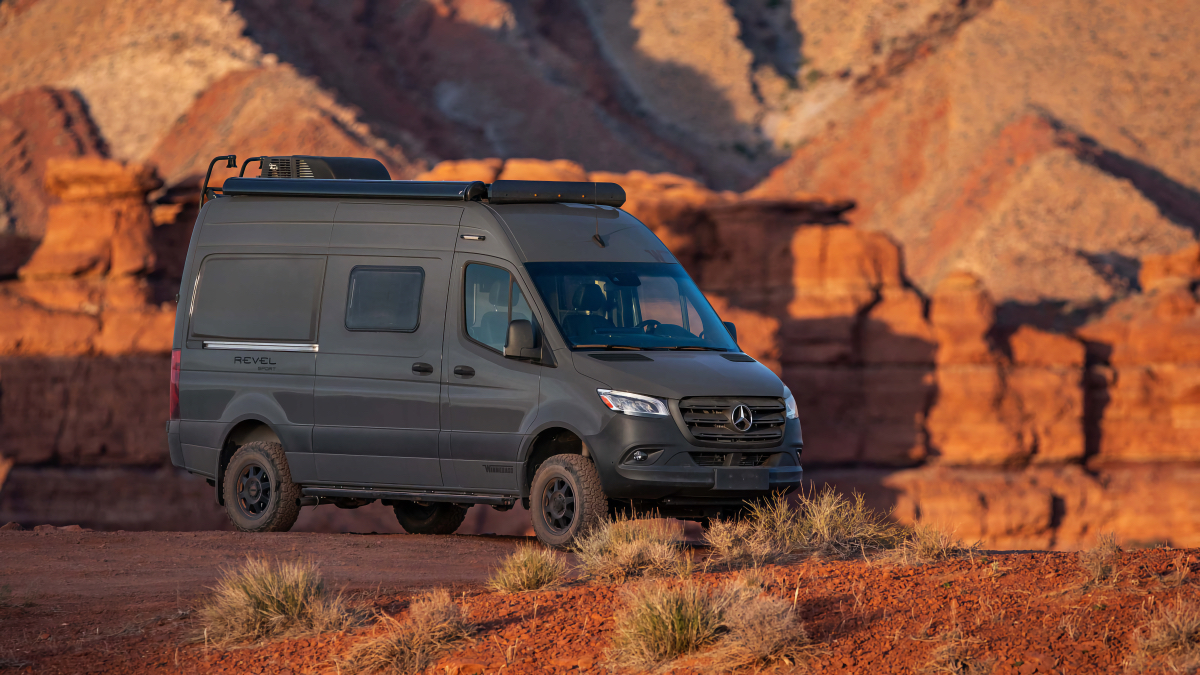
Photo Credit: Winnebago
Winnebago Revel
One of the most advanced vans on the market, the 2025 Revel combines off-road capability, interior luxury and innovative power solutions all of which are integrated in a vehicle length under 20 feet. Built atop an AWD Mercedes Sprinter chassis, the Revel uses a turbo-diesel engine that delivers 330 foot-pounds of torque, making even the most remote campsite accessible. Plus, with the van’s custom insulation and the Winnebago Power Max System, campers will have the heat—and the juice—to stay off-grid even in the coldest months. Starting at $254,076

Photo Credit: Airstream
Airstream Interstate 19
Though it’s undoubtedly a van, there’s a reason Airstream calls its Class B Interstate a “touring coach.” It can fit seven, and its elegant interior (with two TVs) resembles a hotel suite more than a campsite. But it’s also equipped for a crowd, as the cockpit can become a second sleeping area, and for those looking to go off-grid, an upgraded heating system makes the Interstate among the most effcient rigs on the market. Starting at $231,400
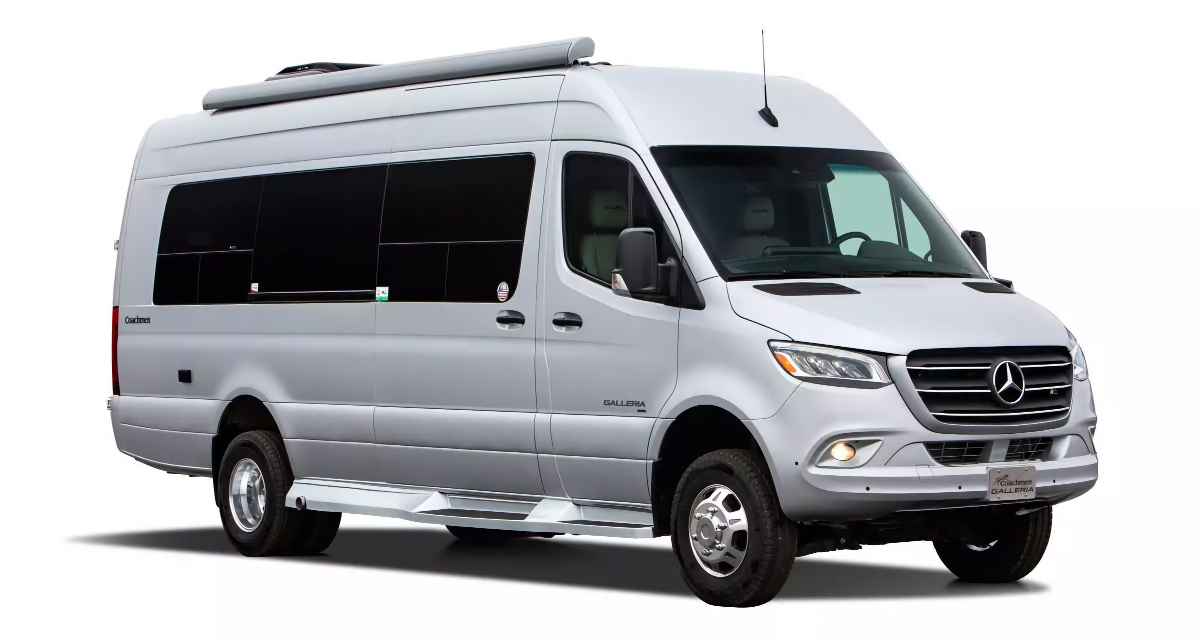
Photo Credit: Coachmen
Coachmen Galleria
The 2025 Galleria uses an extended Mercedes Sprinter chassis, making it one of the bigger camper vans on the market: more than 24 feet long. That extra room isn’t wasted. With several seating areas and an uncommonly large dinette, the Galleria packs more into its interior—including a rear sofa and a 24-inch television—than the typical van. Starting at $270,366
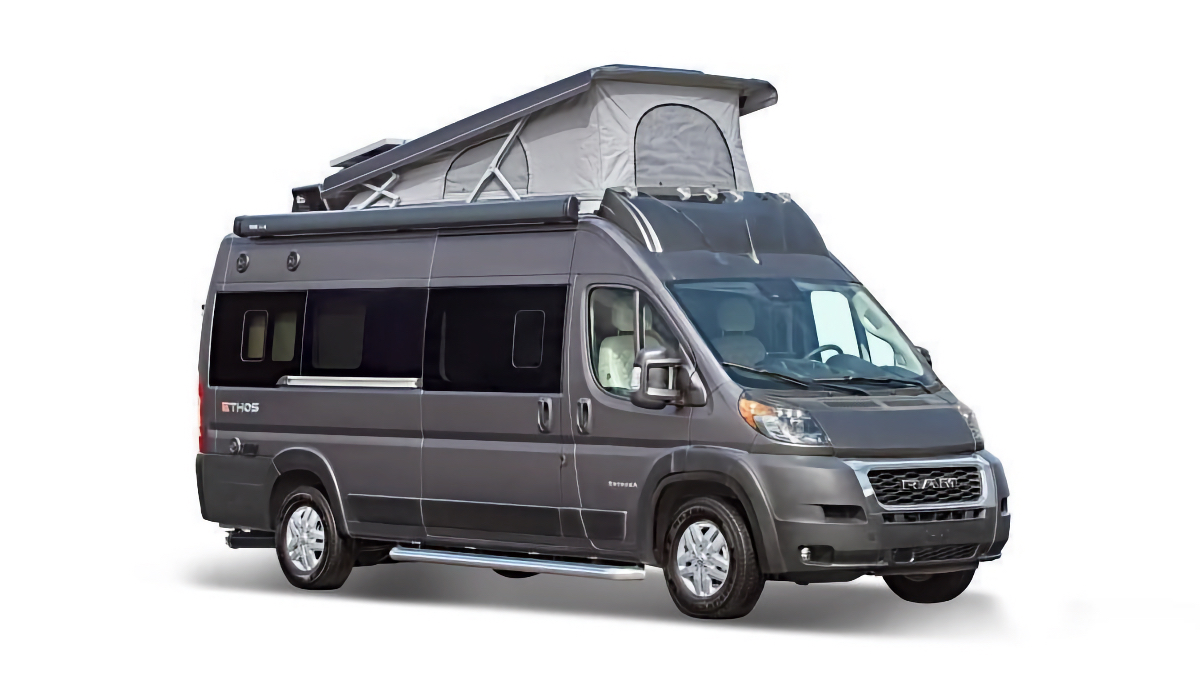
Photo Credit: Entegra
Entegra Ethos
Utilizing a RAM Promaster 3500 chassis, the all-new Entegra Ethos is nearly 21-feet long and comes in four customizable floor plans. Build options are abundant, including a lithium power package for venturing off-grid sans generator, as well as a pop-top sleeping area for travelers who need a bed for guests. A suite of driver-assist features keep van lifers safe on the road. Starting at $182,550
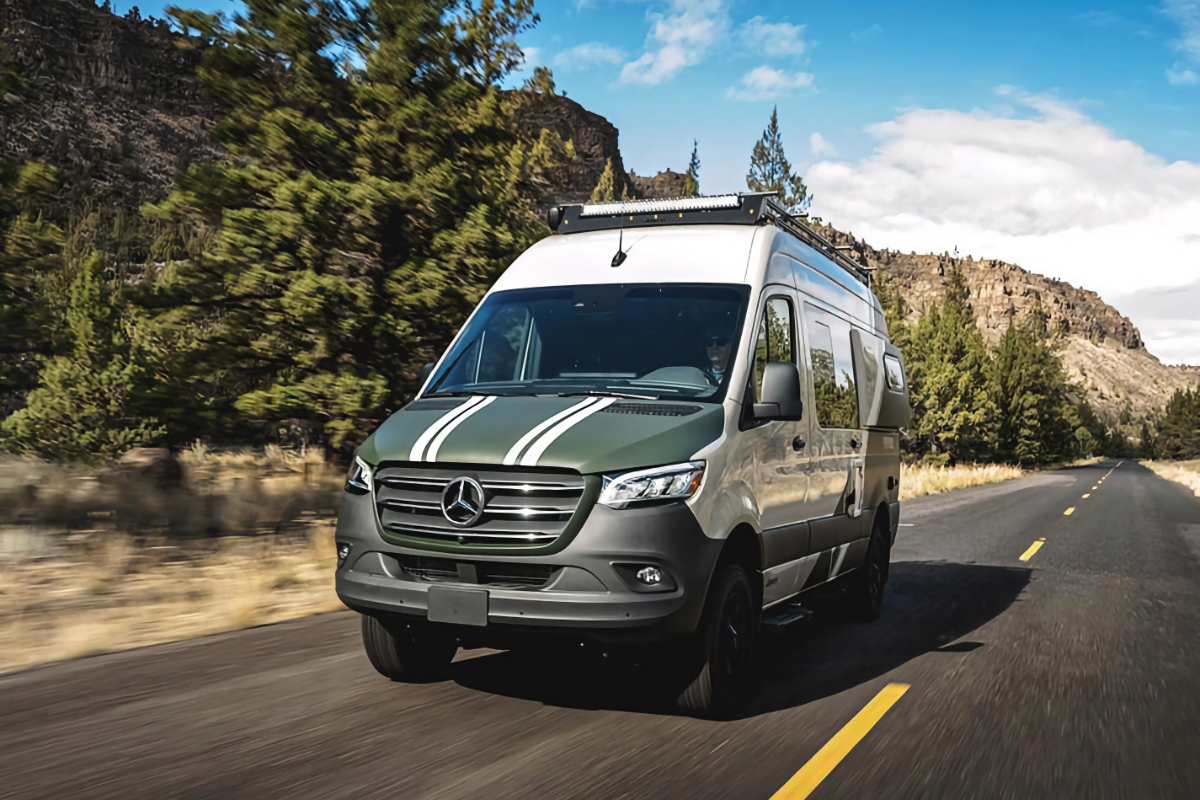
Photo Credit: Jayco
Jayco Terrain
Designed for road warriors bringing a few toys along, the 2025 Terrain offers ample storage capacity without sacrificing the interior amenities that make van life, well, liveable. Built on an AWD Mercedes Sprinter 2500 chassis, the Terrain is equipped with (yes) all-terrain tires and can explore deep down unpaved roads. With a roomy rear garage and a sleeping space that descends from the ceiling, the rig was built for adventure. Starting at $209,993
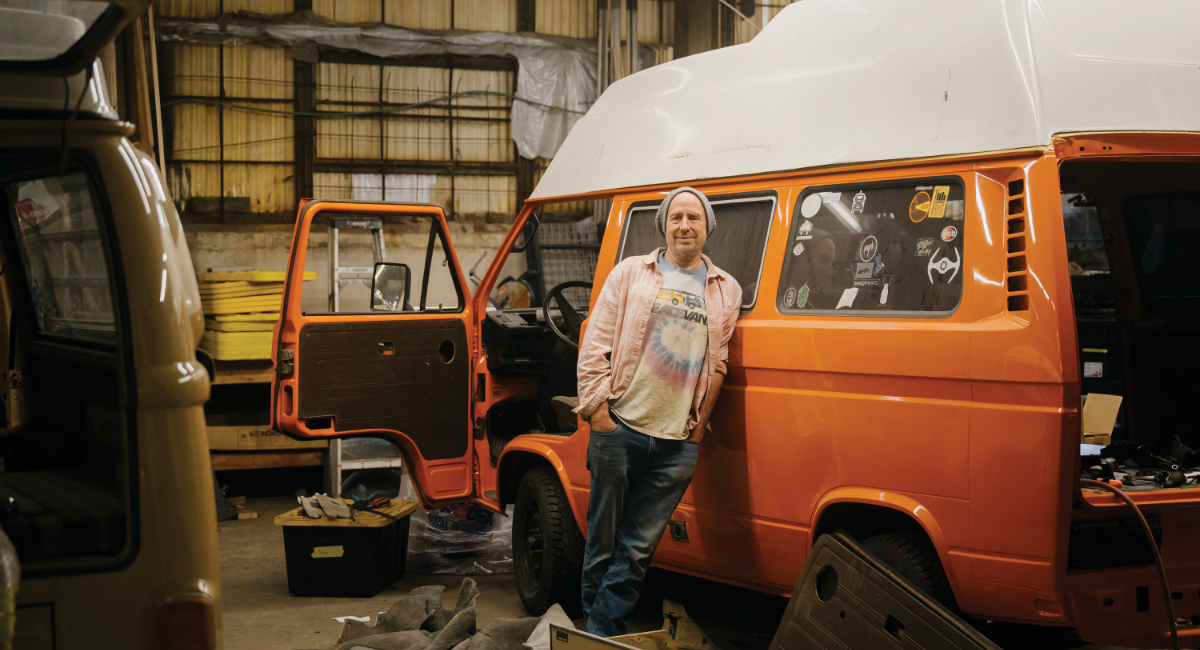
Photo Credit: Grant Hindsley
Beautiful Build-Outs
Storyteller Overland
Location: Birmingham, Alabama
Specialty: Camper van and expedition trucks
Storyteller has been building rugged vehicles— like its flagship MODE vans and its GXV trucks—and stoking adventure-minded travelers along the way since 2019. Its new CREW MODE van, which can sleep up to five, is designed specifically with families in mind. storytelleroverland.com
Leisure Travel Vans
Location: Winkler, Manitoba, Canada
Specialty: Class C Motorhomes
With its origins dating back 60 years, the Canadian company builds Class C RVs on Sprinter and Transit chassis. Its Unity class is highly customizable— it has six floor plans—and can even be outfitted with a Murphy bed. leisurevans.com
Outside Van
Location: Portland, Oregon
Specialty: Sprinter van conversions
Since Outside Van launched in 2007, it’s become one of the most prolific conversion shops in the country, annually producing more than 100 custom builds using the Mercedes Sprinter chassis. The company encourages their customers to choose every interior detail, ensuring each build is unique. outsidevan.com
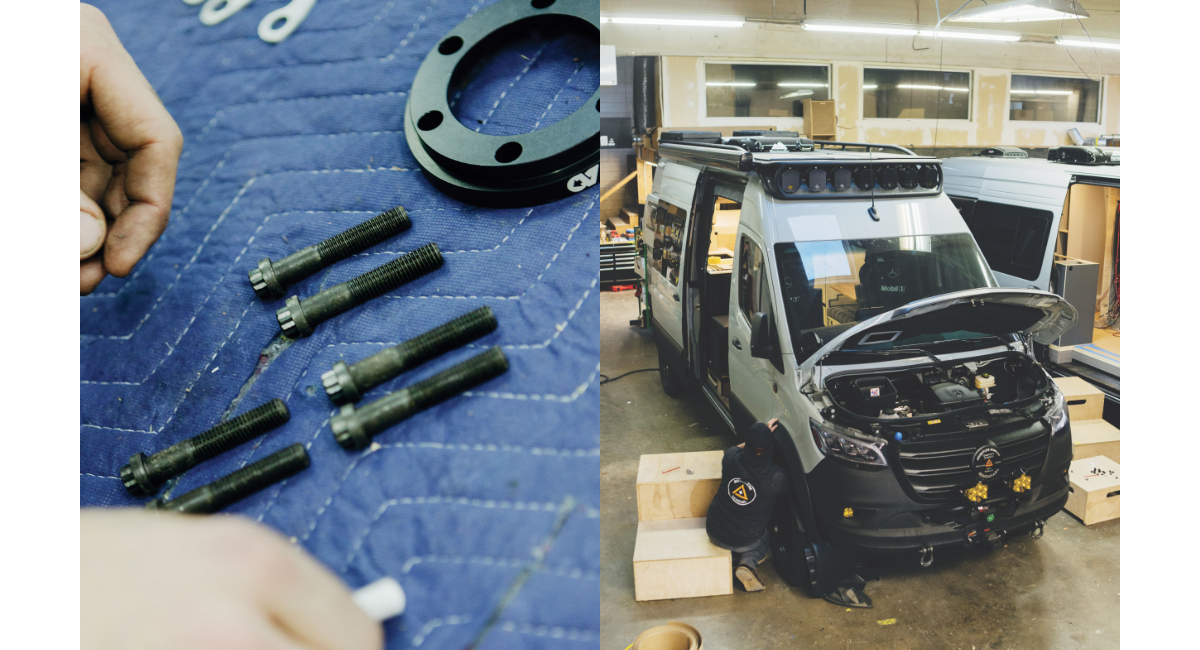
Photo Credit: Will Matsuda
Pleasure-Way
Location: Saskatoon, Saskatchewan, Canada
Speciality: Class B Motorhomes
Specializing in vans and small motorhomes since 1986, Pleasure-Way builds six distinct vehicles—utilizing Sprinter and Transit chassis—and sells them through dealerships across Canada and the United States. The Plateau XLTS features a wide body to maximize interior amenities. pleasureway.com
Benchmark Vehicles
Location: Portland, Oregon
Speciality: Sprinter van build-outs
Benchmark builds exclusively on the Mercedes Sprinter chassis, but aside from that detail, everything else is up to its customers. Launched in 2014 by a woodworker-turned-van-converter, each vehicle is built specifically to the buyer’s preference. benchmarkvehicles.com
Peace Vans
Location: Seattle, Washington
Specialty: Volkswagen and Mercedes van restoration and conversion
Since 2013, Peace Vans has offered Vanagon repair, restoration and build-out services for road-loving folk infatuated with vintage rides. These days, the shop is working with Volkswagen to create camper van concepts for the all-electric ID. Buzz. peacevans.com
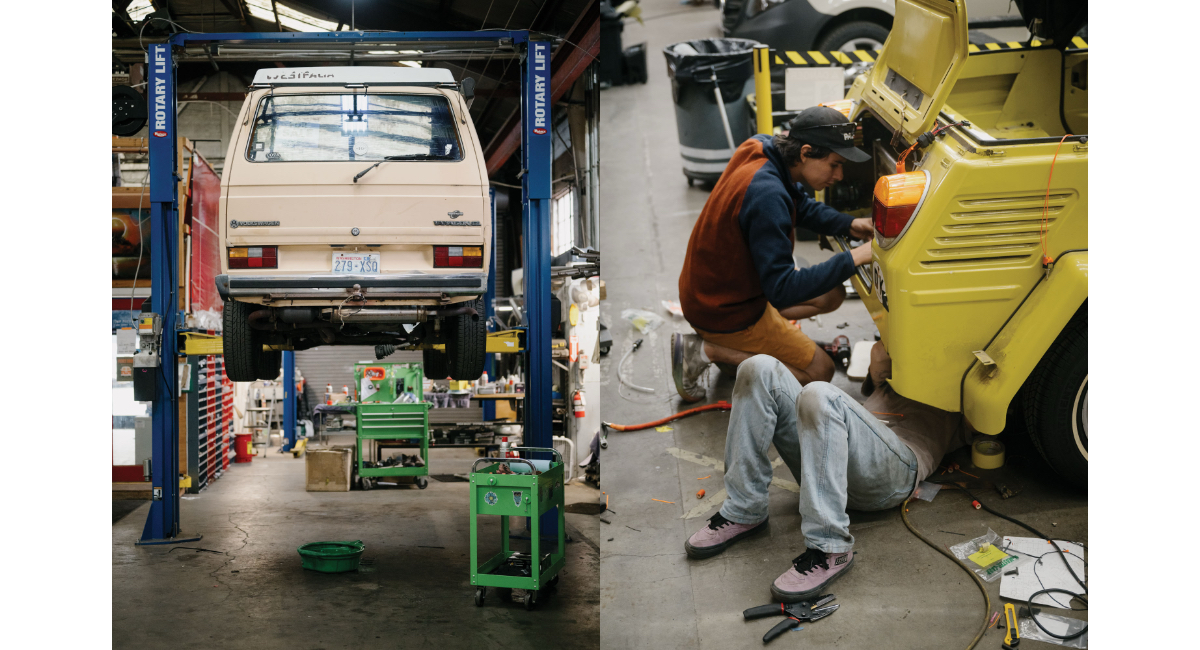
Photo Credit: Grant Hindsley
Campovans
Location: Santa Barbara, California
Specialty: Camper van build-outs
If you show up in Santa Barbara with a van—whether it’s a Sprinter, Transit, Promaster, or Astro —the team at CampoVans will build it to your custom specs. One of the oldest conversion shops in the business, they’ve been innovating since 2008. campovans.com
Quigley 4×4
Location: Manchester, Pennsylvania
Specialty: Four-wheel-drive conversions
Quigley started customizing and mechanically converting vans to 4×4 back in the 1970s, and since then they’ve taken thousands of Ford, Chevy and Nissan vans and made them off-road capable. Today, they’re the only shop approved by Ford to make the Transit four-wheel drive. quigley4x4.com
The Gear
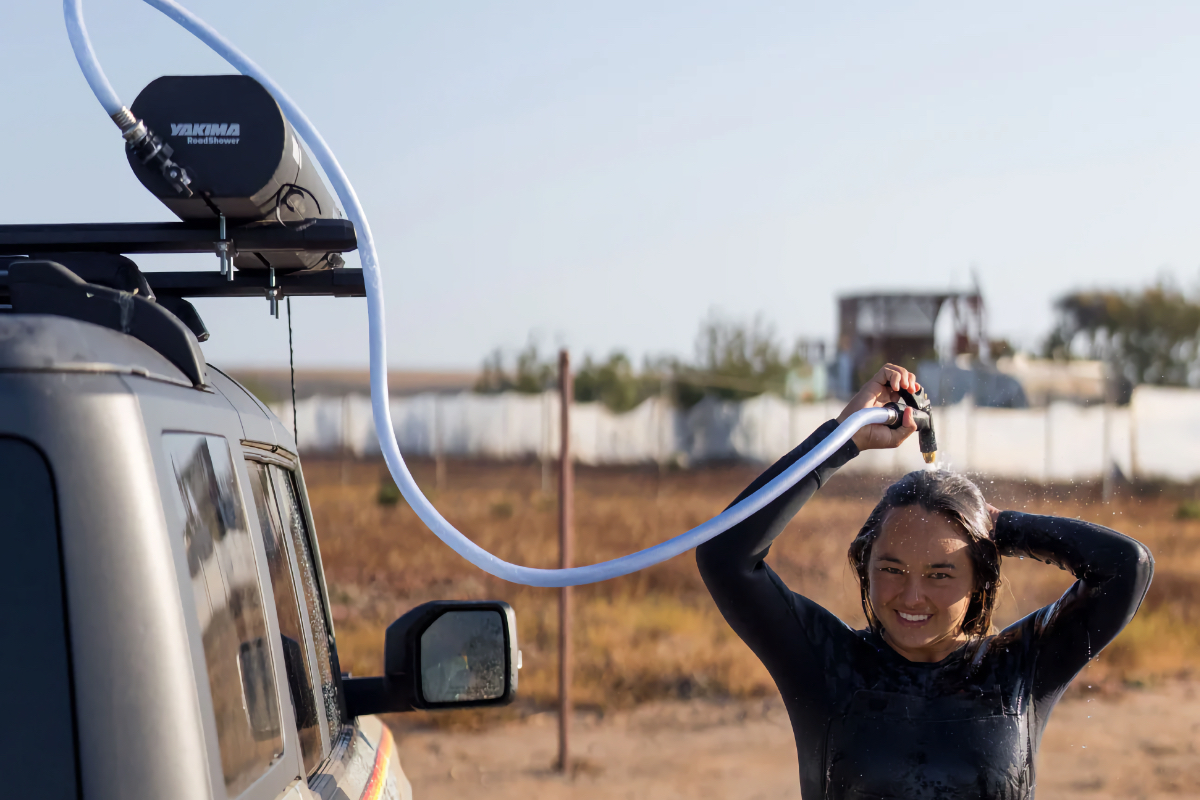
Photo Credit: Yakima
With the limited space in a van, you’d be forgiven if you didn’t prioritize a shower in your custom build-out. But the Yakima RoadShower, which attaches to the outside of your rig and boasts pressurized 10-gallon tanks, is ideal for scrubbing down at the end of a long day. $669
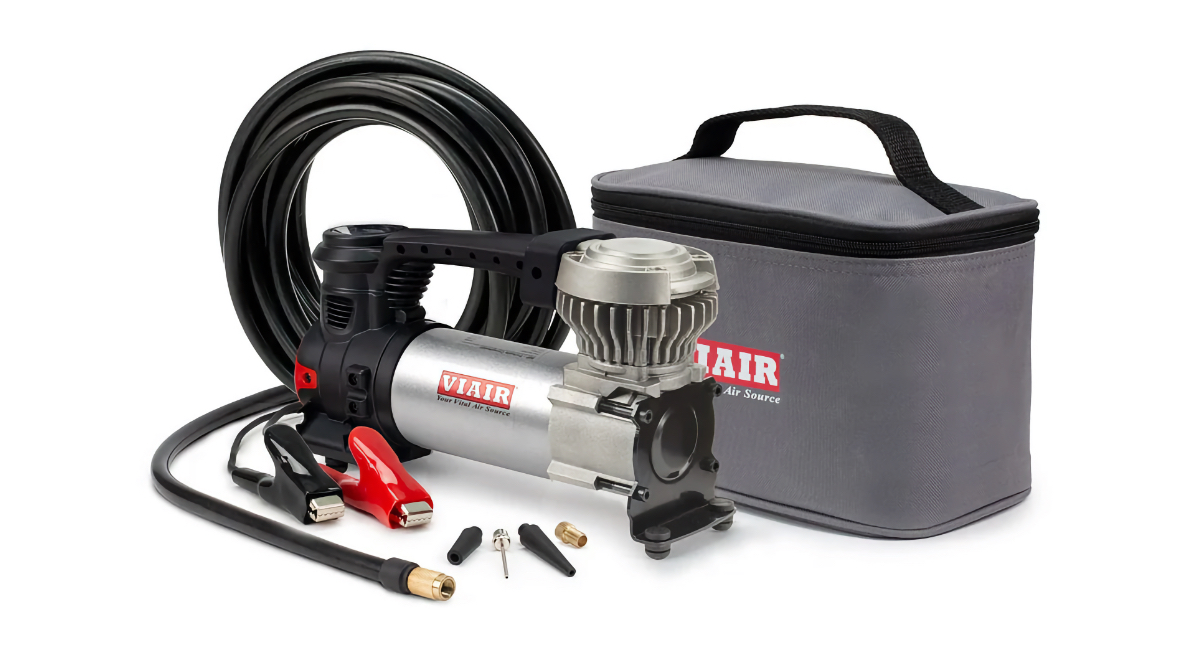
Photo Credit: Viair
When the pavement ends and the gravel begins, you’ll want to air down your tires. And when it’s time to reinflate, the Viair 89P RVS Portable Compressor, designed specifically for Class Bs, can fill tires from 80 to 90 PSI in under two minutes. $79.95
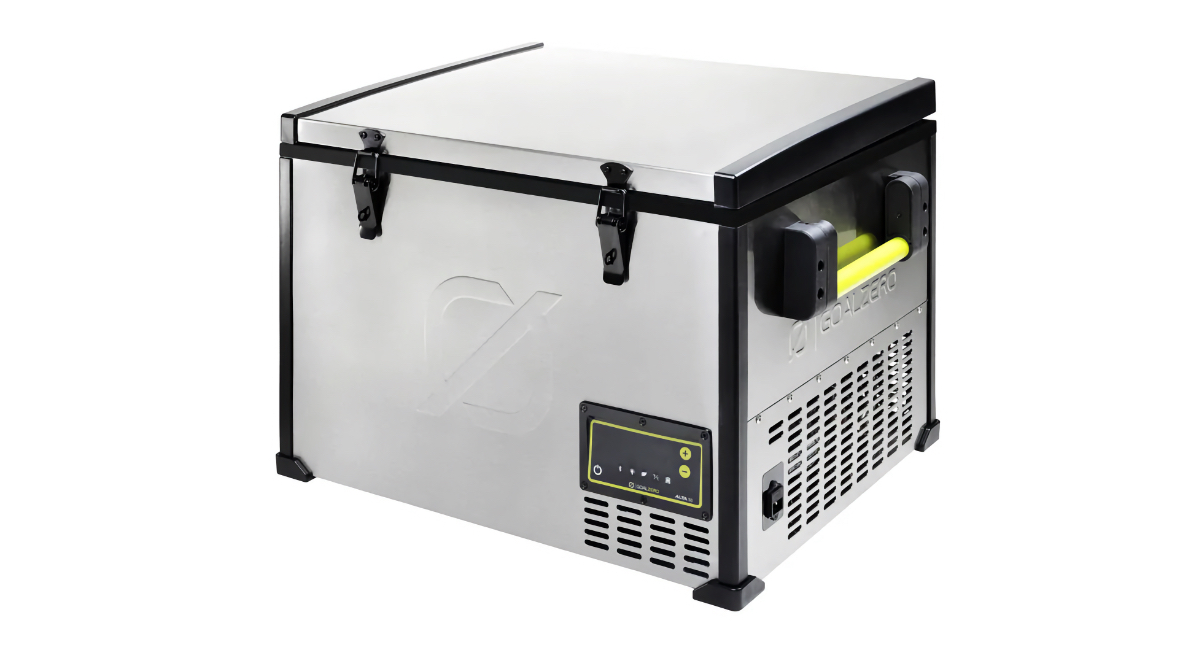
Photo Credit: Goal Zero
Equal parts cooler, fridge, and freezer, the Goal Zero Alta 50 has more than 50 liters of capacity (that’s 75 cans worth of space). Thanks to insulated design, it’s more than capable as a cooler; plug it in and it will chill perishables down to -4 degrees. $799
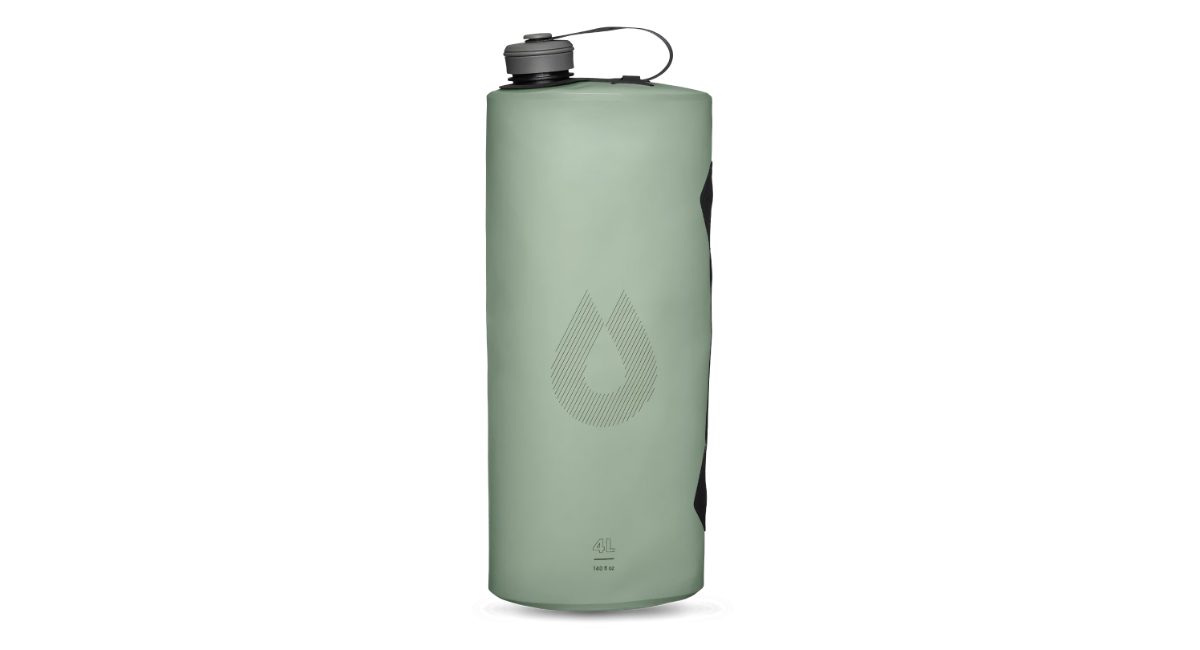
Photo Credit: Hydrapak
Plastic water jugs take up precious space in a van when not in use—plus, they’re prone to failure in cold temps. With a collapsible and easy-to-transport water bag like the Hydrapak Seeker 4L, you can stuff your van with other precious belongings. $31
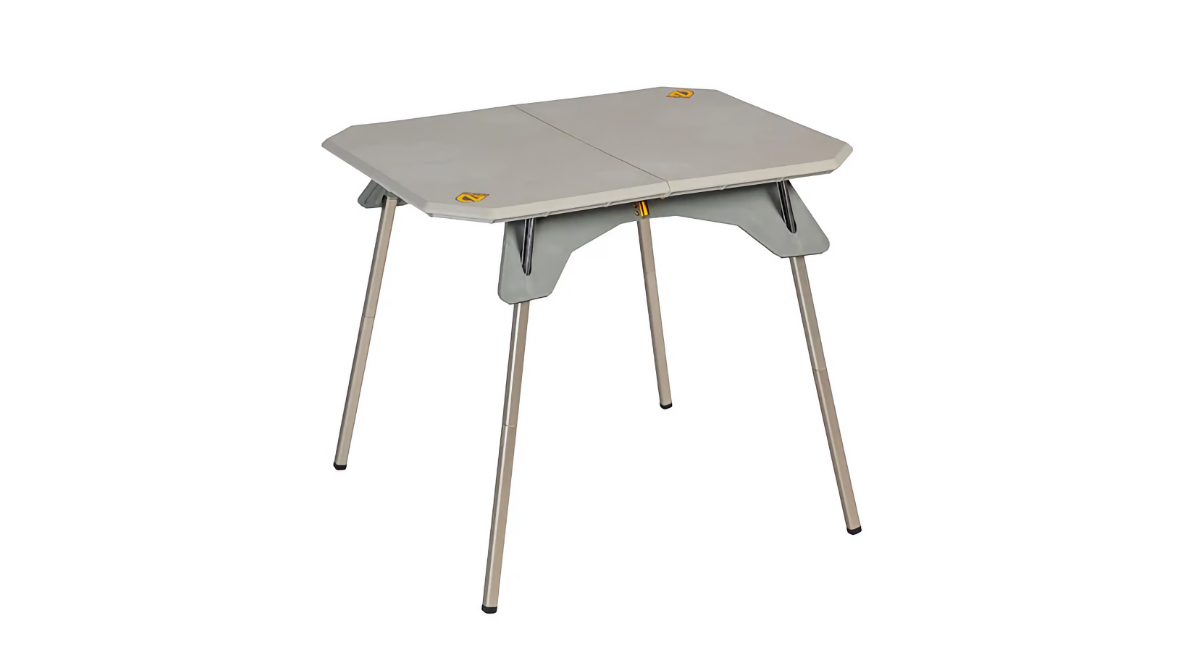
Photo Credit: Nemo Equipment
Even the most well-equipped camper van might not have an ideal area to prepare food and/or eat. Something you can set up outside—like the dual-height Moonlander Table from Nemo Equipment—will transform mealtime. $159.95

Photo Credit: Starlink
Why go searching for Wi-Fi if you don’t have to? With a Starlink Mini, vanlifers can connect to reliable internet in seconds, no matter how far flung their travels may be. Plans start at $50/month
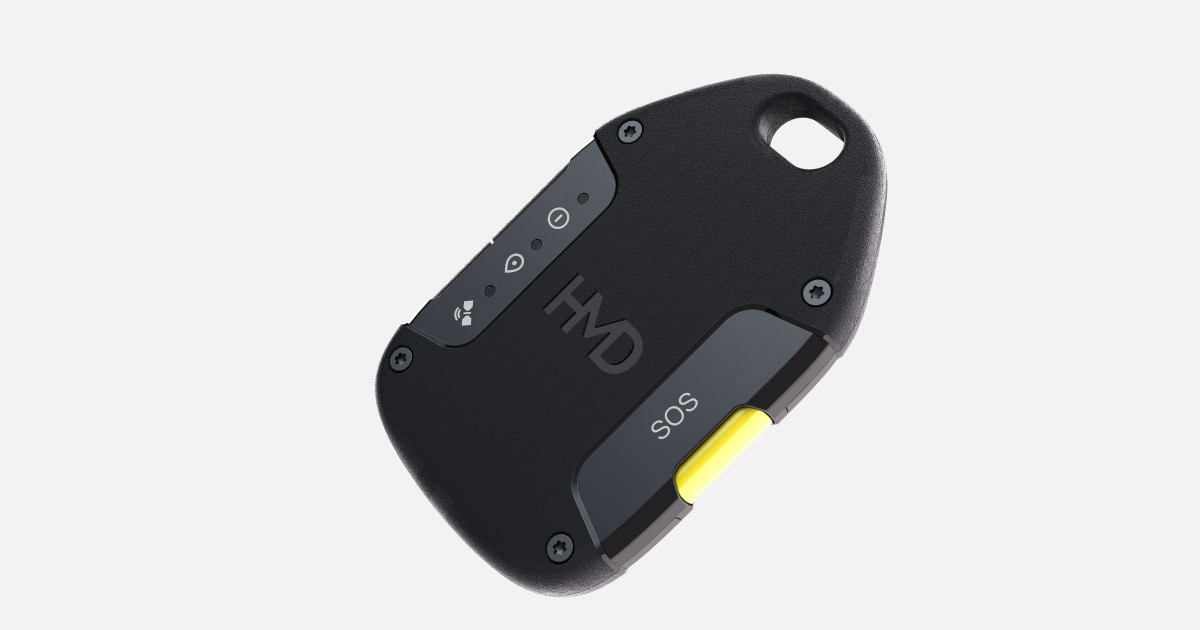
Photo Credit: HMD
There’s nothing like leaving cell service behind. That is, until something goes wrong. A trusted satellite messenger should be part of every van lifer’s kit, and the HMD Offgrid—easy to use and equipped with an SOS button— offers cheaper plans than most competitors. $199.99
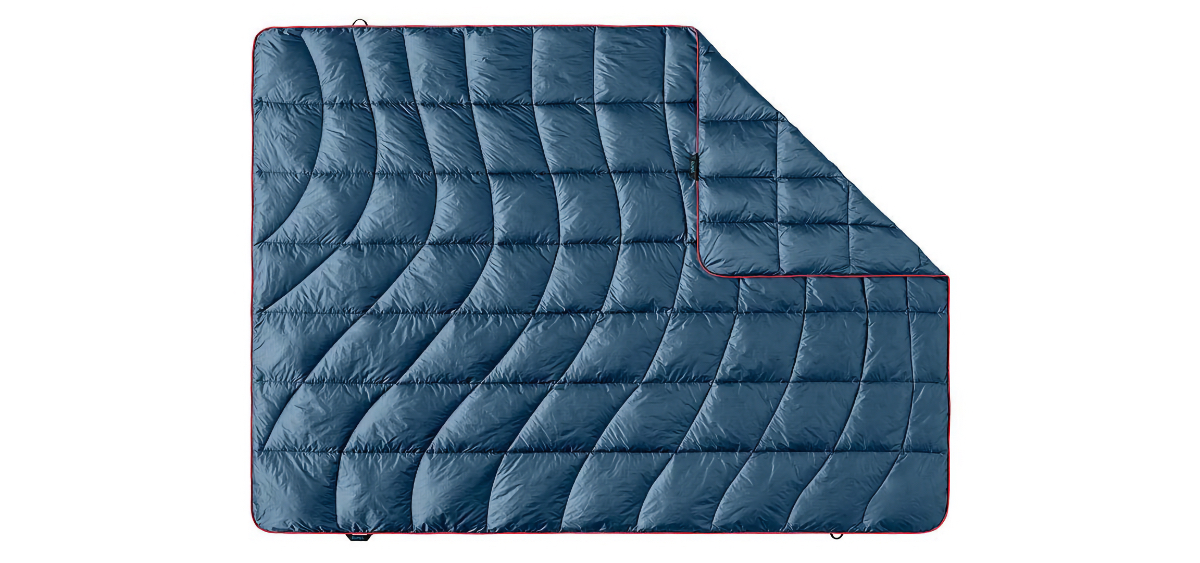
Photo Credit: Rumpl
A good comforter or sleeping bag is essential for van life. So, too, is a blanket you can deploy outside on chilly evenings. The Original Puffy from Rumpl is just that: It’ll keep you cozy while also handling the rigors of campsite living (you can even get one with a National Park-inspired design). Starting at $99
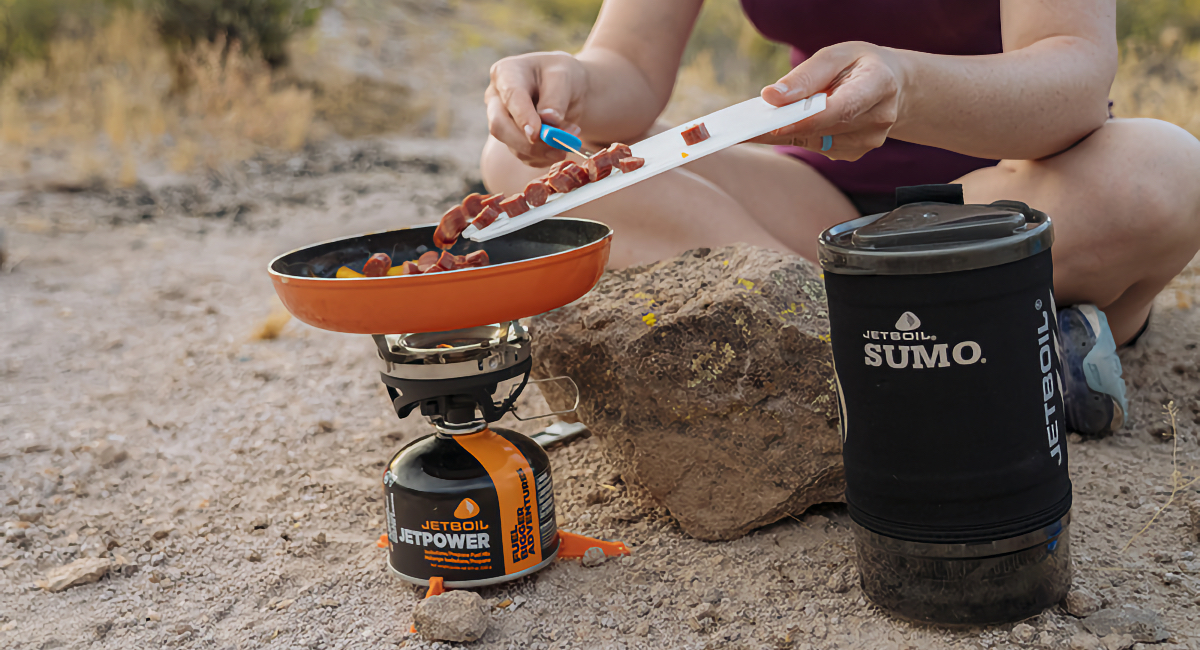
Photo Credit: JetBoil
Whether you’re heating water for morning coff ee or steaming vegetables for dinner, the JetBoil Sumo offers a nearly two-liter cooking cup that can be paired with skillets and cooking pots. Weighing only one pound and packing up to 5 x 8 inches, it stows away easily on the road. $179.99, jetboil.com
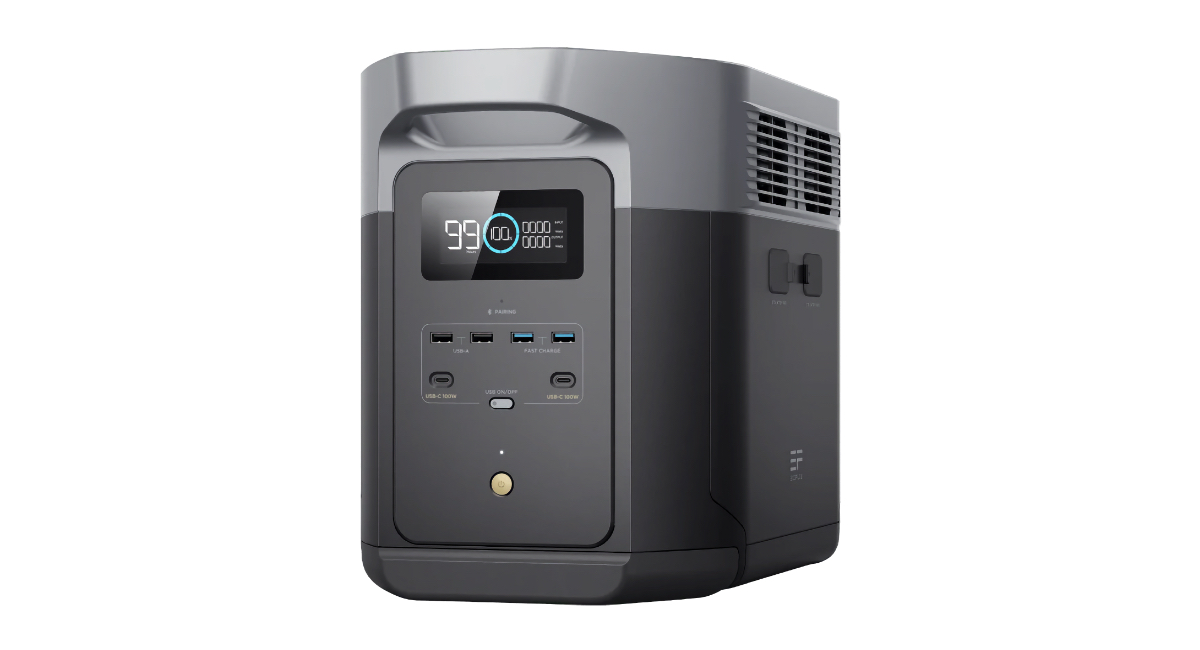
Photo Credit: EcoFlow
The age of noisy gas generators is coming to an end thanks to power stations like the EcoFlow Delta 2 Max. With a max output of 3400 watts, this solar generator can run nearly every appliance in your rig, supporting long expeditions off grid. $949, ecoflow.com
This article originally appeared in Wildsam magazine. For more Wildsam content, sign up for our newsletter.
The post The Camper Van Plan appeared first on RV.com.


